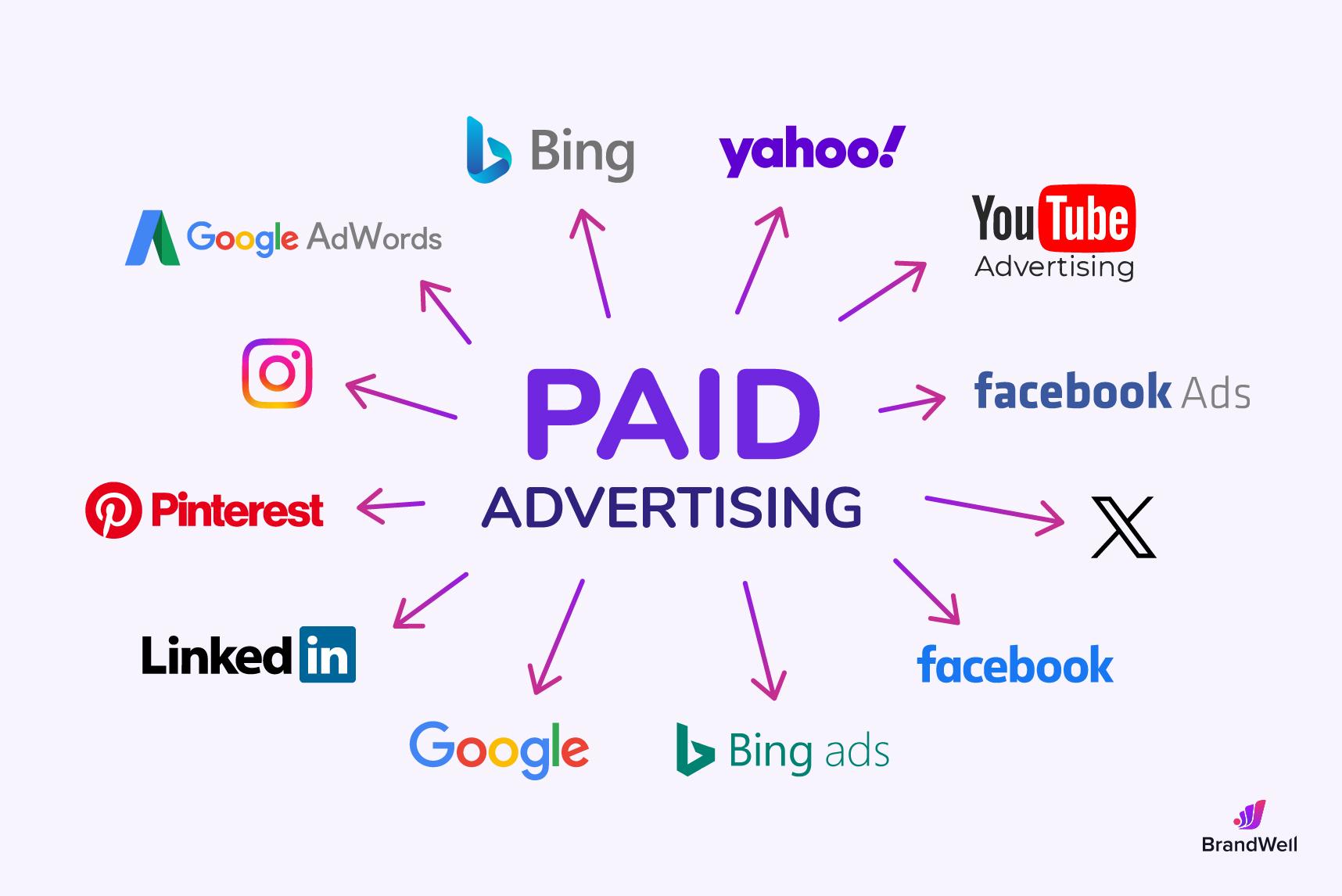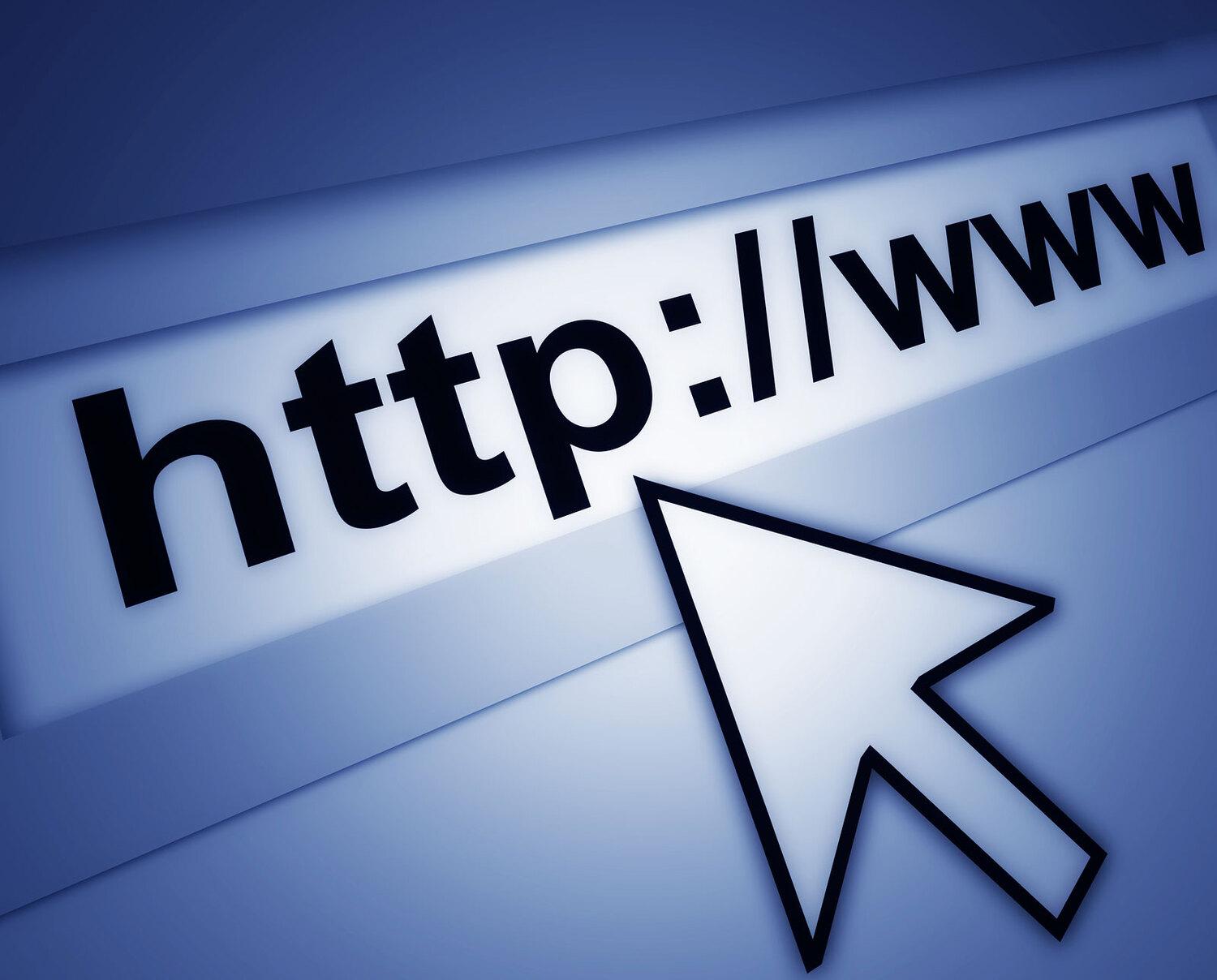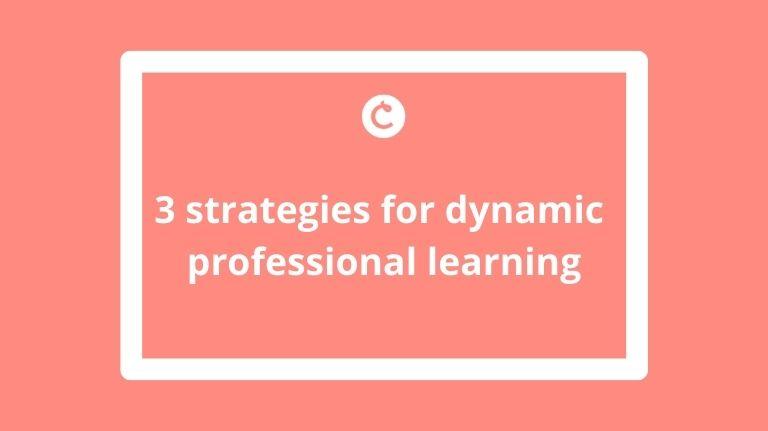In today’s fast-paced digital landscape, getting your brand noticed is no easy feat. Whether you’re a budding entrepreneur or a seasoned marketer, you’ve likely heard the buzz around organic and paid marketing strategies. But what’s the real difference between the two, and more importantly, when should you use each? Let’s face it—navigating the world of marketing can feel overwhelming. With so many options at your fingertips, it’s crucial to understand how to leverage both organic and paid approaches effectively. In this article, we’ll break down the key differences between organic and paid marketing, explore the unique benefits of each, and help you determine the best strategies to amplify your brand’s reach. Whether you’re looking to build a loyal community or drive immediate sales, knowing when to tap into these two marketing powerhouses can make all the difference. So, let’s dive in and find out how you can create a balanced marketing plan that works for you!
Understanding the Basics of Organic and Paid marketing
When navigating the expansive world of marketing, it’s essential to grasp the fundamental differences between organic and paid strategies. Both approaches have their unique advantages, and understanding these can substantially impact your marketing success. Organic marketing focuses on building a natural presence through valuable content, social media engagement, and SEO tactics. It’s all about cultivating relationships and trust without direct financial investment in advertisements.
On the other hand, paid marketing offers a more immediate approach. By investing in ads, businesses can quickly increase visibility and reach target audiences more precisely. This method can yield rapid results, making it an excellent option for promotional campaigns or time-sensitive offers. Though, the effectiveness of paid marketing frequently enough hinges on budget allocation and ad optimization.
Here are some key differences between the two strategies:
- Cost: Organic marketing generally requires a lower financial investment,focusing more on time and effort. Paid marketing demands a clear budget and ongoing expenses.
- Timeframe: Organic strategies frequently enough take longer to see meaningful results,while paid marketing can provide immediate visibility.
- Longevity: Organic content can continue to drive traffic over time, whereas paid ads cease to yield results once the budget runs out.
- Engagement: Organic marketing fosters a more genuine connection with audiences,while paid ads may come across as intrusive if not executed well.
Deciding between these approaches largely depends on your business goals and resources.If you’re looking to build long-term relationships and establish brand authority, organic marketing is invaluable. However, if you have a specific campaign that requires rapid traction, investing in paid marketing can be the way to go.Assessing your objectives and available budget will guide you in choosing the right path.
both organic and paid marketing have their places in a comprehensive marketing strategy. The best results frequently enough come from a well-balanced approach that leverages the strengths of both methods. Consider experimenting with a mix of strategies to determine what resonates best with your audience and meets your business needs.
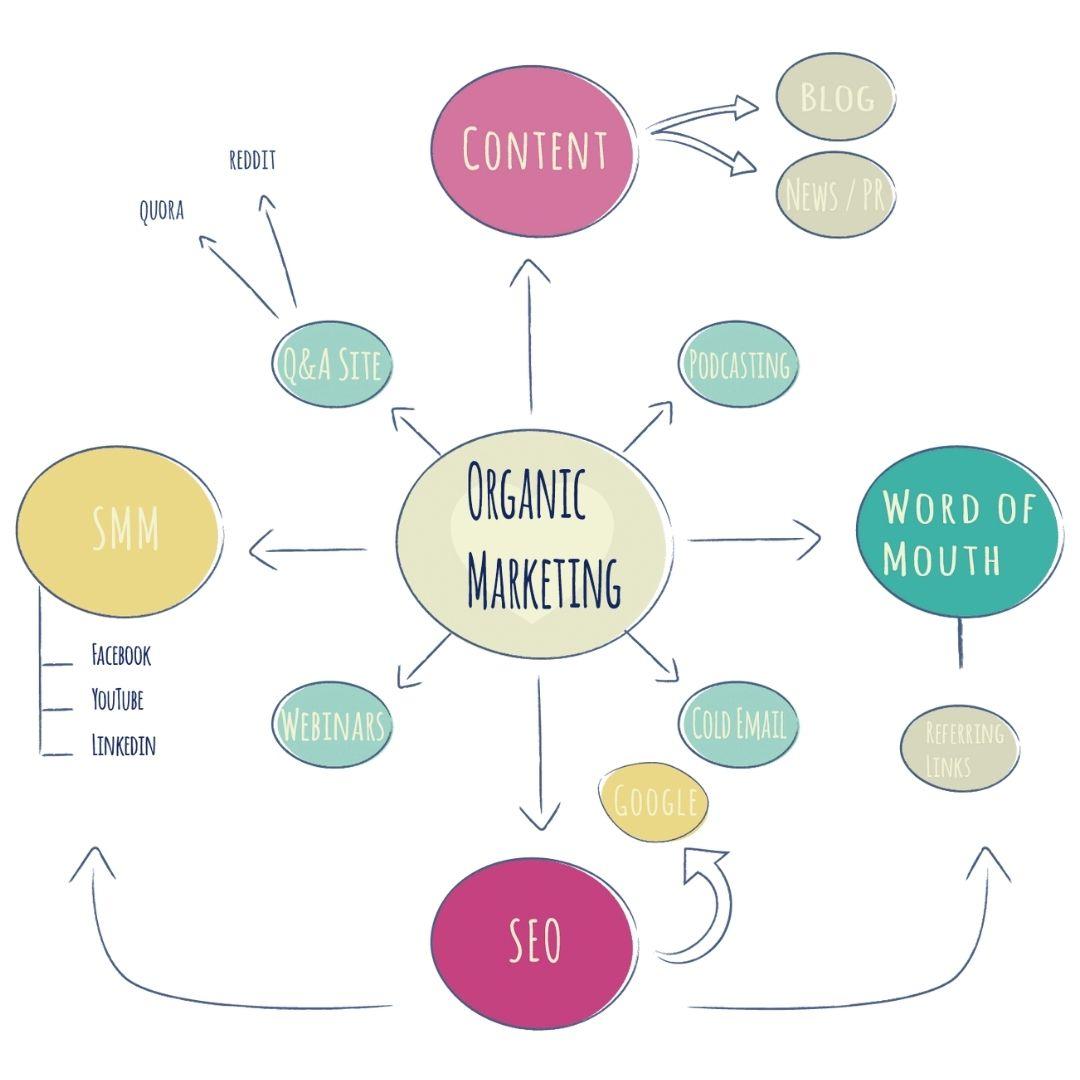
The Key Benefits of Organic Marketing You Cant ignore
In today’s digital landscape, organic marketing has emerged as a necessity for brands looking to build lasting relationships with their audience. One of the most compelling benefits is its ability to foster genuine connections. unlike paid marketing, which frequently enough feels intrusive, organic methods—such as social media engagement, content marketing, and SEO—encourage authentic interactions that resonate with consumers.
Another significant advantage is the cost-effectiveness of organic strategies.While paid campaigns can drain budgets quickly, organic marketing relies on creativity, valuable content, and time. Brands can cultivate a loyal following without the need for constant financial investment, making it an ideal strategy for startups and small businesses aiming to maximize their reach.
Additionally, organic marketing enhances your brand’s credibility and trustworthiness. When consumers encounter organic content, it often feels more reliable than advertisements.engaging blog posts, insightful social media updates, and authentic customer testimonials can position your brand as an industry authority, leading to higher conversion rates and customer retention.
| Benefit | Description |
|---|---|
| Genuine Connections | Encourages authentic interactions with your audience. |
| Cost-Effectiveness | maximizes reach without heavy financial investment. |
| Credibility | Positions your brand as a trustworthy authority. |
Moreover, organic marketing often yields sustainable results.while paid ads might provide a quick influx of traffic, the effects of organic strategies can endure long after the initial efforts. Quality content can continue to attract visitors,nurture leads,and convert customers over time,creating a compound effect that paid methods cannot replicate.
lastly, embracing organic marketing allows for a more flexible and adaptive strategy. As market trends shift,brands can quickly pivot their content strategies based on audience feedback and engagement analytics. This adaptability not only keeps your marketing relevant but also demonstrates to your audience that you are listening and responsive to their needs.

Why Paid Marketing Might Be Your secret Weapon
When it comes to driving traffic and generating leads, paid marketing can be a powerful ally.while organic marketing builds credibility over time, the immediacy of paid campaigns offers unique advantages that can fast-track your success. Here are some compelling reasons why incorporating paid marketing into your strategy might just be your game changer.
instant Visibility
One of the most significant benefits of paid marketing is the speed with which you can gain exposure. With organic strategies, you often have to wait weeks or even months to see significant results.Paid advertising, on the other hand, allows you to:
- Reach your target audience almost instantly.
- Show up prominently in search results or social media feeds.
- Tailor your ads to specific demographics, interests, and behaviors.
Control and Flexibility
Paid marketing provides you with a level of control that organic strategies simply cannot match. You can dictate your budget,choose your keywords,and adjust your messaging on the fly. This flexibility allows businesses to:
- Test multiple ad variations to see what works best.
- Scale campaigns up or down based on performance data.
- Target niche markets with precision.
Data-Driven Insights
Paid marketing platforms offer robust analytics that can inform your overall strategy.You can track metrics such as click-through rates, conversion rates, and return on ad spend. This data enables you to:
- Identify prosperous campaigns and replicate their success.
- Pinpoint areas for advancement and optimize your ads accordingly.
- Make informed decisions that drive long-term growth.
| Paid Marketing | Organic Marketing |
|---|---|
| Immediate results | Long-term results |
| Highly targeted | Broader reach |
| Adjustable budget | Time investment |
while organic marketing is essential for building a sustainable brand, incorporating paid marketing can elevate your efforts dramatically. By harnessing the advantages of paid strategies, you can achieve quicker results, maintain control over your campaigns, and leverage data to optimize performance continually. The combination of both approaches can create a robust marketing strategy that propels your business forward.
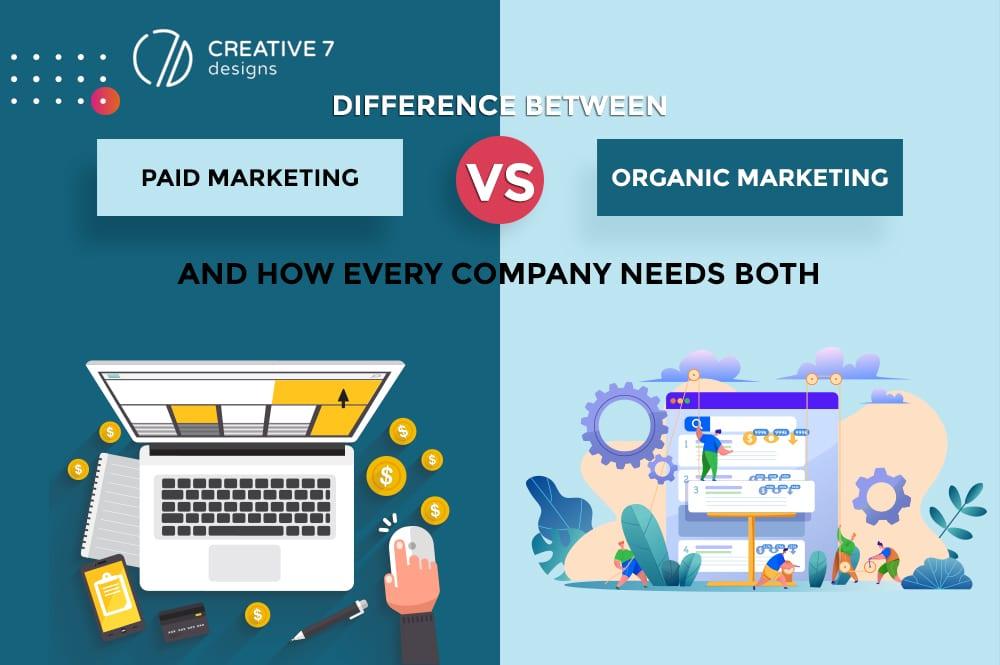
When to Choose Organic Over Paid: A Strategic Approach
Choosing between organic and paid marketing depends largely on your specific business goals, target audience, and budget constraints. While both strategies can be effective, understanding when to prioritize one over the other can optimize your marketing efforts. Here are a few scenarios where organic marketing may shine:
- Long-term growth: If your goal is to build a sustainable brand presence, organic strategies like SEO, content marketing, and social media engagement can foster trust and authority over time.
- Limited budget: When funds are tight, investing in organic methods allows you to reach an audience without the need for continuous financial expenditure.
- Niche targeting: For businesses operating in a niche market, organic methods can definately help connect with highly specific audiences who are more likely to convert.
Conversely, there are moments when paid marketing takes the lead due to its immediate results. Consider opting for paid strategies in the following situations:
- Time-sensitive promotions: If you have a special offer or a new product launch, paid advertising can generate quick visibility and sales.
- Competition: In fiercely competitive industries, paid ads can help you stand out and capture attention that organic reach may not achieve.
- Scalability: Paid campaigns can be quickly scaled up, allowing you to respond to market demands rapidly.
| Strategy | Best For | Key Benefits |
|---|---|---|
| Organic | Long-term growth | Trust, Cost-effective, Engagement |
| Paid | Immediate results | Visibility, Targeting, Flexibility |
Ultimately, the decision of whether to choose organic or paid marketing should align with your current business objectives. Emphasizing a balanced strategy that incorporates both methods might often yield the best results, allowing you to build a presence while also generating immediate returns. Consider your resources, goals, and desired outcomes to develop a strategic approach that works for your brand.
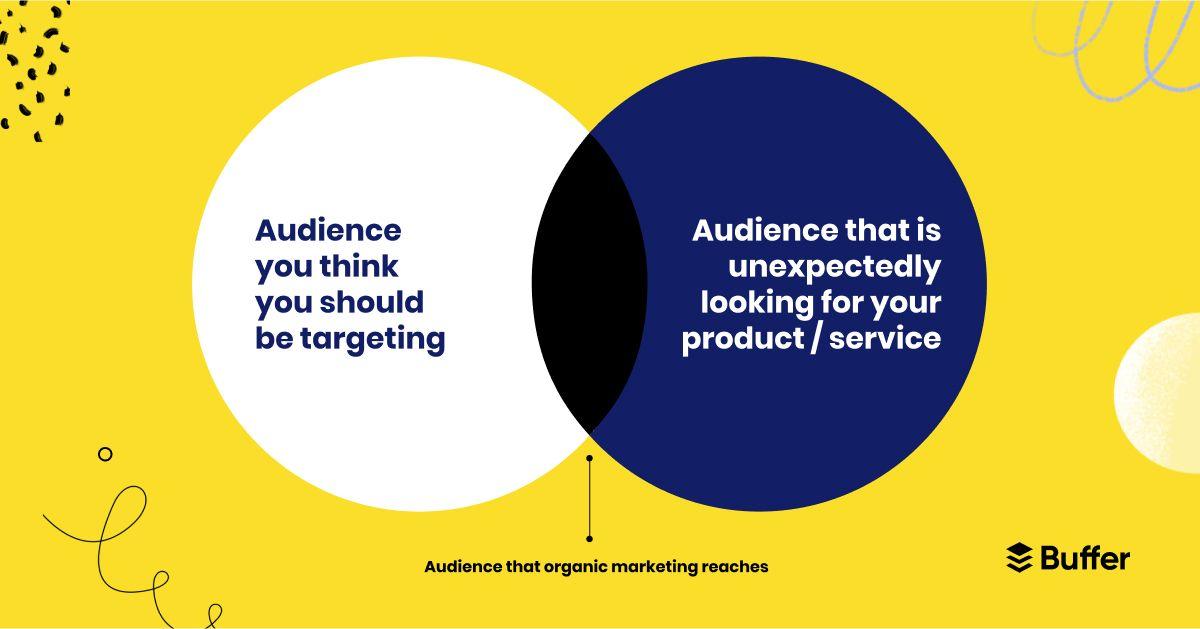
Balancing Act: How to Integrate Organic and Paid Strategies
In the ever-evolving landscape of digital marketing, finding the right equilibrium between organic and paid strategies is essential for maximizing impact and reach. Each approach offers unique advantages, and when they complement each other, they can drive unparalleled results. Here’s how to seamlessly integrate both strategies for optimal performance.
Leverage the Strengths of Each Method
Understanding the inherent strengths of organic and paid marketing will set the foundation for effective integration.Consider the following:
- Organic Marketing: Builds trust and brand loyalty over time. Content such as blogs, social media engagement, and SEO work to attract and retain customers naturally.
- Paid Marketing: Provides immediate visibility and control over targeting. pay-per-click ads, social media ads, and influencer partnerships can quickly generate leads and increase brand awareness.
Utilize Paid Strategies to Enhance Organic Reach
One effective strategy is to use paid promotions to amplify high-performing organic content. This can include:
- Boosting posts on social media that have shown strong engagement metrics.
- Running targeted ads that direct traffic to blog posts or landing pages that are performing well organically.
By doing so, you not only increase the visibility of your best content but also drive more organic traffic as people engage and share it further.
Invest in Data-Driven Insights
Analytics play a crucial role in understanding what works for your audience. Use insights from your paid campaigns to inform your organic content strategy. As an example, analyzing which keywords and ad copy resonate can guide your SEO efforts. Here’s a simple breakdown:
| Paid Insights | Organic Strategy Adjustments |
|---|---|
| High-converting keywords | Integrate these into blog posts and website content. |
| Audience engagement metrics | Tailor organic content to align with audience interests. |
| Successful ad formats | Replicate effective styles in your organic content. |
Monitor and Adjust Your Approach
maintaining an agile strategy is key.Regularly assess the performance of both organic and paid efforts. A/B test different methods and be ready to pivot based on real-time data. This not only ensures you are making the most of your marketing budget but also keeps your audience engaged and responsive.
Measuring Success: Metrics that matter for Both Approaches
When it comes to evaluating the effectiveness of your marketing efforts, understanding the right metrics is crucial for both organic and paid strategies. While the end goal might potentially be the same—boosting visibility and driving conversions—the metrics used to gauge success can differ significantly between the two approaches.
For Organic Marketing, consider focusing on:
- Organic Traffic: The number of visitors coming to your site without paid ads speaks volumes about your SEO health.
- Engagement Metrics: Analyze metrics like average session duration and pages per session to understand how users interact with your content.
- Conversion Rate: Track how many visitors complete desired actions, such as signing up for a newsletter or making a purchase.
- Keyword Rankings: Keeping an eye on your position for targeted keywords can help you assess the effectiveness of your SEO tactics.
On the other hand, for Paid Marketing, the following metrics are key:
- Return on Ad Spend (ROAS): This metric tells you how much revenue you’re generating for every dollar spent on ads.
- Click-Through Rate (CTR): A higher CTR indicates that your ads are compelling and relevant to your target audience.
- Cost Per Acquisition (CPA): Understanding how much you’re spending to acquire a customer can definitely help optimize your budget and strategies.
- Impressions: Keeping track of how many times your ad is shown can give insight into your brand’s reach and visibility.
to help visualize the differences, consider the following comparison:
| Metric Type | Organic Marketing | Paid Marketing |
|---|---|---|
| Traffic Source | Unpaid (SEO) | Paid Ads |
| Measurement Focus | Engagement & Retention | Cost Efficiency & Reach |
| Long-Term Impact | Building Authority | Immediate Results |
| Cost | Time & Effort | Financial Investment |
Choosing the right metrics not only provides clarity on what’s working but also empowers you to make data-driven decisions. Whether you lean towards organic methods or paid strategies, tracking the appropriate metrics ensures that your marketing efforts yield fruitful returns.
Budgeting for Marketing: how to allocate Funds Wisely
When it comes to allocating your marketing budget,understanding the difference between organic and paid strategies is crucial. Each has its unique strengths and weaknesses, and knowing when to invest in each can significantly impact your overall marketing success. Start by assessing your business goals, target audience, and the specific outcomes you hope to achieve.
Organic marketing should be your go-to strategy when you want to build long-term relationships with your audience. It focuses on creating valuable content that resonates with your target market, allowing you to engage and connect authentically. Here are some effective organic marketing strategies to consider:
- Content marketing (blog posts, videos, podcasts)
- Search engine optimization (SEO)
- Social media engagement and community building
- Email marketing and newsletters
On the other hand, paid marketing is ideal for quick results and brand visibility. It allows you to reach a broader audience in a shorter time frame, making it an excellent choice for launching new products or time-sensitive promotions. Here’s when to consider allocating funds for paid marketing:
- To increase brand awareness during a product launch
- For specific promotions or sales events
- When entering new markets or demographics
- To complement organic efforts during peak times
To make informed decisions about your budget allocation, assess the potential return on investment (ROI) for both organic and paid strategies. A well-rounded approach often involves a blend of both. The following table outlines some basic considerations for budgeting:
| Strategy | Budget Considerations | Expected Outcomes |
|---|---|---|
| Organic | Lower initial cost; time-intensive | Long-term engagement; brand loyalty |
| Paid | Higher upfront investment; quick results | immediate visibility; targeted reach |
Ultimately, the key to effective budgeting for marketing is to continuously monitor and adjust your strategies based on performance metrics. Experiment with both organic and paid marketing channels to discover what works best for your audience. Balancing your budget between these approaches can lead to sustainable growth and a solid return on your marketing investments.
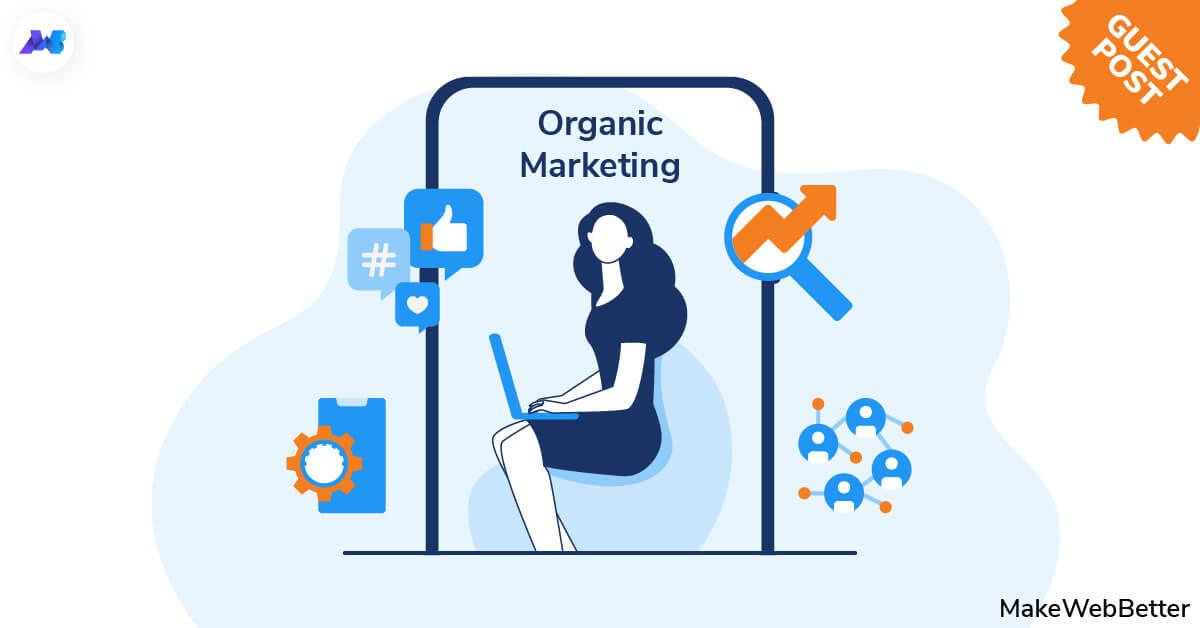
Real-World Examples: Brands Excelling with Both Tactics
Let’s take a look at some brands that have mastered the art of balancing both organic and paid marketing strategies to achieve stellar results.
1.Nike: A Perfect Blend of Inspiration and Promotion
Nike has become synonymous with athleticism and inspiration. Their approach to marketing is a beautiful marriage of organic content and paid ads. Through their social media campaigns, Nike engages customers with motivational stories and user-generated content that resonates on a personal level. together, their targeted ads on platforms like Instagram and Facebook push specific products to the forefront. This dual approach allows them to build a loyal community while driving sales.
2. Red Bull: Energy in Every Channel
Red Bull is not just a beverage; it’s a lifestyle brand. They leverage organic content by creating thrilling, action-packed videos and sponsoring extreme sports events that naturally attract their audience’s interest. On the flip side, they invest heavily in paid marketing campaigns, ensuring their product is front and center during major sporting events. Their dual strategy keeps Red Bull relevant and engaging across multiple channels.
3. HubSpot: Education Meets Promotion
HubSpot effectively uses organic marketing through its wealth of educational content,including blogs,eBooks,and webinars. This positions them as thoght leaders in the inbound marketing space. To complement this, they utilize PPC campaigns to promote their software tools and services to businesses looking to enhance their marketing efforts. This combination not only nurtures leads but also converts them into loyal customers.
4. Starbucks: Community Engagement and Targeted Offers
Starbucks has created a sense of community around its brand through organic engagement on social media and personalized content. their posts often feature customers enjoying their products, which helps in building a connection. Simultaneously occurring, they run targeted ads promoting seasonal drinks or loyalty programs, effectively reaching potential customers who may not be following them yet. This strategy enhances brand loyalty while attracting new patrons.
Comparison Table of Strategies
| Brand | Organic Strategy | Paid Strategy |
|---|---|---|
| Nike | Motivational content and user stories | Targeted ads on social media |
| Red Bull | Sponsorship of extreme sports events | PPC during major sporting events |
| HubSpot | Educational blogs and webinars | Ads promoting their marketing tools |
| Starbucks | Community-focused social media engagement | Seasonal promotions and loyalty ads |
These brands not only showcase how effective a combined approach can be, but they also serve as examples of how to engage an audience genuinely while driving conversions through strategic paid efforts. By learning from them, businesses can find their own unique blend of organic and paid marketing that works for their goals.
Future Trends: What’s Next for Organic and Paid marketing
As we look towards the future of marketing, both organic and paid strategies are evolving rapidly, influenced by technological advancements and changing consumer behaviors. To stay ahead of the curve, marketers need to be aware of emerging trends that can enhance their efforts in both realms.
Data-Driven Decision Making is becoming increasingly crucial. With AI and machine learning technologies at our disposal, marketers can analyze vast amounts of data to make informed decisions about their campaigns. This means that both organic and paid strategies will benefit from real-time insights, allowing for rapid adjustments and optimization. Marketers will need to adopt tools that facilitate real-time data analysis for better targeting and personalization.
Another major trend is the rise of voice search optimization. As smart speakers and voice-activated devices become more common, the way consumers search for data is changing. This shift calls for a fresh approach to organic content creation, with a focus on natural language and conversational phrases. Marketers will need to rethink their SEO strategies to ensure they capture traffic from voice searches, while also considering how paid ads may appear in this new landscape.
Furthermore, the integration of social commerce is set to revolutionize how brands connect with customers. Social media platforms are increasingly offering features that allow users to buy products directly. This trend blurs the lines between organic engagement and paid promotions, as brands will need to create compelling organic content that drives sales while also leveraging strategically placed ads to enhance visibility and conversion rates.
Lastly, the importance of sustainability and ethical marketing cannot be overlooked. Consumers are increasingly conscious of the brands they support and their impact on society and the habitat. Future marketing strategies, both organic and paid, will need to address these concerns transparently. Brands that authentically convey their values and practices will foster deeper connections with their audiences, making it essential to incorporate these elements into all marketing efforts.

Final Thoughts: crafting a Hybrid Strategy for maximum Impact
In the ever-evolving landscape of digital marketing, striking a balance between organic and paid strategies is crucial for maximizing your brand’s impact. The right hybrid approach not only enhances visibility but also fosters long-term customer relationships. To achieve this synergy, consider the following key elements:
- Identify Your Goals: Clearly define what you want to achieve. Are you looking for immediate sales, or do you want to build brand awareness over time? Each objective may require a different emphasis on organic or paid strategies.
- Know Your Audience: Understanding your target demographic is vital. Tailor your organic content to resonate with your audience’s interests while using paid ads to reach broader segments that may not be aware of your brand.
- Analyze performance: Regularly review your analytics to gauge which strategy is yielding the best results. This will allow you to pivot when necessary, ensuring you allocate resources effectively.
- Test and Iterate: Experiment with different combinations of organic and paid tactics.A/B testing can reveal insights that enhance both strategies, leading to improved campaign outcomes.
A well-crafted hybrid strategy can leverage the strengths of both organic and paid marketing. For instance, utilizing organic methods can establish credibility and trust, while paid ads can provide the necessary visibility to support your organic efforts. This dual approach not only captures immediate interest but also cultivates lasting engagement.
| Strategy | Benefits | When to Use |
|---|---|---|
| Organic Marketing | Cost-effective, builds trust | Long-term brand building |
| Paid Marketing | Immediate results, targeted reach | Short-term promotions or campaigns |
Ultimately, the most successful campaigns will be those that elegantly blend both strategies, allowing brands to remain agile in a competitive marketplace. By harnessing the unique advantages of organic and paid marketing, you position your brand for sustained growth and influence.
Frequently Asked Questions (FAQ)
Q&A: The Difference Between Organic vs Paid Marketing (And When to Use Each)
Q: What exactly is organic marketing?
A: Organic marketing refers to the strategies and tactics that naturally attract customers without paying for placement. This includes SEO (search engine optimization), content marketing, social media engagement, and email marketing. It’s all about building relationships and trust over time, which can lead to sustainable growth.
Q: And what about paid marketing? How does that work?
A: Paid marketing involves investing money to promote your brand through various channels. This can include pay-per-click (PPC) ads, social media ads, sponsored content, and more.The beauty of paid marketing is that you can see quick results and reach a larger audience almost immediately.
Q: So, which one is better: organic or paid marketing?
A: There’s no definitive answer; it really depends on your business goals, budget, and timeline. Organic marketing is fantastic for long-term growth and building a loyal customer base, while paid marketing can deliver immediate results and help you reach specific targets quickly. frequently enough,a balanced approach works best!
Q: When should I use organic marketing?
A: Organic marketing is ideal for businesses looking to build credibility and trust over time. It’s also great if you’re on a tight budget since it requires less financial investment. If you’re focused on building a community or a loyal customer base, investing in organic strategies can yield significant long-term benefits.
Q: And when is paid marketing the right choice?
A: Paid marketing shines when you need to generate immediate traffic or leads. It’s particularly useful for launching a new product, running a time-sensitive promotion, or reaching a specific demographic quickly. If you have the budget, it can complement your organic efforts by increasing visibility and driving immediate sales.
Q: Can I use both organic and paid marketing together?
A: Absolutely! Actually, combining both strategies can be incredibly effective. As a notable example, you can use paid ads to drive traffic to your organically optimized content, enhancing both visibility and engagement. This synergy can maximize your outreach and impact, leading to more conversions.
Q: What are some common pitfalls to avoid in either strategy?
A: In organic marketing, a common mistake is neglecting SEO best practices or failing to produce high-quality content that resonates with your audience. For paid marketing, many businesses squander their budget on poorly targeted ads that don’t align with their audience’s interests. Always track your results and adjust your strategies accordingly!
Q: Any final advice on choosing between organic and paid marketing?
A: The key is to understand your audience and your goals. If you’re looking for sustainability and community,lean towards organic. If you need immediate results, don’t hesitate to invest in paid advertising. Ideally, create a cohesive strategy that incorporates both to harness their strengths and maximize your marketing efforts!
To Wrap It Up
navigating the world of marketing can feel like a daunting task, but understanding the difference between organic and paid strategies is key to unlocking your brand’s full potential. Organic marketing is all about building genuine relationships and fostering trust over time, while paid marketing can offer quick wins and targeted reach when you need it most.
So, when should you leverage each approach? If you’re looking for long-term growth and a loyal customer base, invest in organic strategies like content creation and social media engagement. However, if you’re gearing up for a product launch or need immediate visibility, don’t hesitate to turn to paid advertising.
Remember, the best marketing strategy often involves a blend of both organic and paid efforts. By thoughtfully integrating these two approaches, you can create a comprehensive marketing plan that not only drives traffic but also builds a community around your brand.
So, what’s next? Start experimenting! Analyze your audience, set clear goals, and don’t be afraid to pivot as you learn what works best for you. With the right combination of organic and paid marketing, you’ll be well on your way to achieving remarkable results. Happy marketing!

